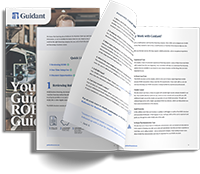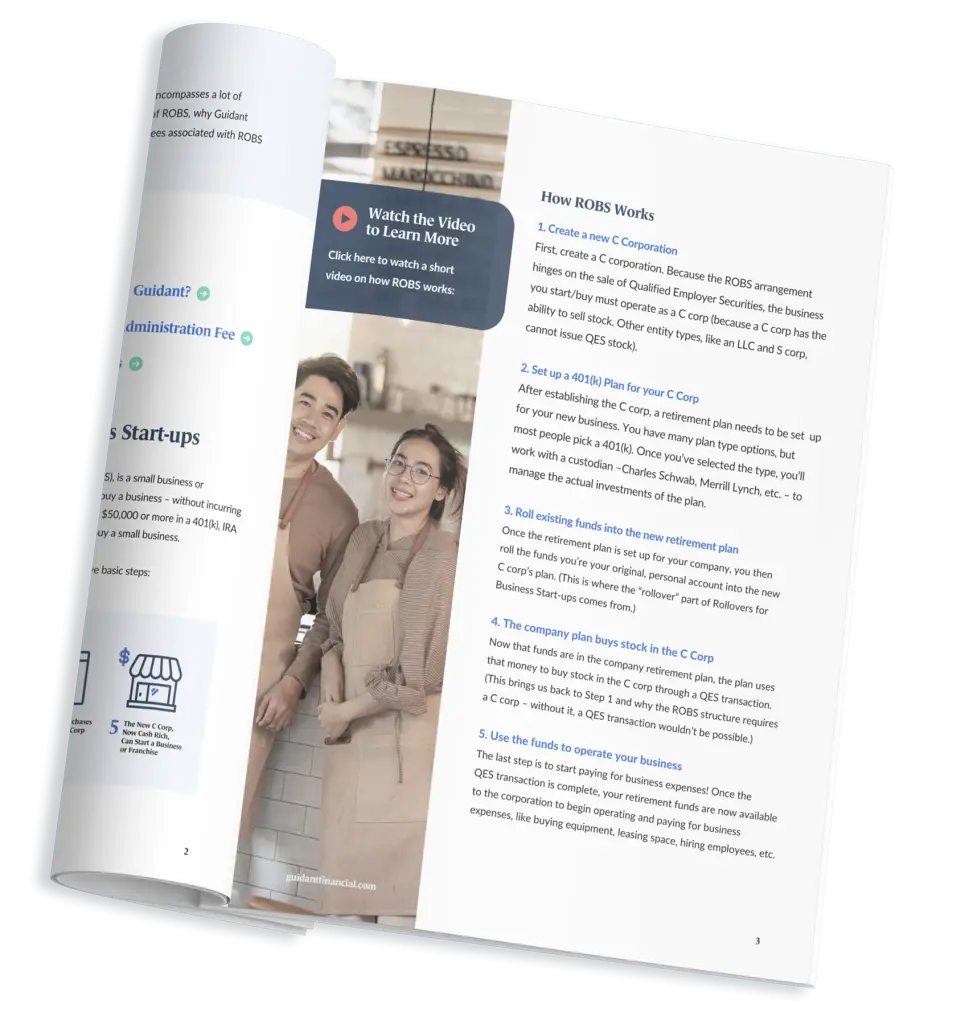If you’re an aspiring small business owner without significant amounts of personal assets, business assets, or cash on hand, the path to business ownership can seem daunting. Fortunately, when traditional financing options fall short, seller financing can be a favorable option for both the seller and buyer of an existing business.
Currently a small business owner? Check out our guide on Selling your Small Business with Seller Financing.
Buying an existing business is a smart and relatively quick way to become an entrepreneur. It comes with several advantages — an established client base, curated logo and branding, and potentially a brick-and-mortar store that’s already in place. Running any company requires the entrepreneurial spirit, but joining the game when things are already off the ground really can make entrepreneurship a little easier.
Why Choose Seller Financing?
Not surprisingly, you’re more likely to pay a higher upfront price when purchasing an existing business than when launching a new one — but you’re also more likely to generate revenue sooner. Guidant clients paid an average price of $100,000 to purchase a business last year, a sum that most don’t have on hand in cash or available credit. Fortunately, there are many ways to get creative and make purchasing your dream business a reality.
When seeking business financing, most entrepreneurs first turn to a traditional lender such as banks or friends and family. While family and bank financing are certainly options, there’s another option when buying an existing business — seller financing.
Also known as owner financing, seller carryback, or simply a seller note, seller financing involves the seller essentially acting as a bank. The process of seller financing is simple: the individual selling the business holds the note for the business loan and the buyer makes a monthly payment, with interest, to the seller rather than to a bank. This method of financing offers benefits to both buyers and sellers. For the buyer, it can be the bridge to business ownership for those who don’t have enough cash to buy a business outright. For the seller, it can open up the pool of potential buyers. In fact, 60 to 90 percent of small business purchases involve seller financing.
How Does Seller Financing Work?
Seller financing allows business buyers and sellers to remove the middleman (bankers) and work together directly to come up with a funding deal. Usually, buyers must come up with the funding to cover the entire purchase price, but with seller financing, the seller agrees to carry the promissory note of the loan, and the buyer makes regular payments (with interest) to the seller.
Sellers usually offer between five and 60 percent of the total asking price, so most buyers combine seller financing with other funding methods to meet their total capital needs. Other types of financing can include their own cash, loans from family or friends, business loans, or 401(k) business financing.
The willingness of sellers to finance is usually a sign that the seller is confident their business will generate enough income to pay back the loan. Some small business owners believe if a seller isn’t willing to offer financing, it’s a sign that their cash flow isn’t very strong and the business itself may be in trouble.
What are the Steps to Seller Financing?
A seller financing deal involves many of the same characteristics as a traditional business loan. If both parties agree to pursue seller financing, the seller typically asks the potential buyer to ‘apply’ by providing personal financial documents, their resume, and other pertinent information related to finances and business experience. Here’s a breakdown of the next steps:
- As always when buying a business, prospective buyers should conduct due diligence and make sure a company’s balance sheet is in good order. A prospective buyer should also do a credit check on the business through a company such as Experian or Equifax. Looking at the credit report of the business for sale will help confirm the business is in good shape and generating enough revenue to pay its loans. Once you’ve confirmed that all financial statements are in order, it’s time to apply to the seller as mentioned above.
- The seller will be relying on the buyer to run the business efficiently and to make payments on time so it’s important they see proof the buyer knows how to run a business and handle finances so there’s no buyer default on the loan. In other words, the buyer needs to ensure the financial health of the business. The seller may want to ensure the buyer has a successful strategy in mind to grow the business, typically in the form of a business plan. You can learn more about writing a business plan here.
- The seller has the same abilities as a banker to pull a potential buyer’s credit history and the right to deny financing if any of the information received doesn’t meet their criteria. Buyers with a lower credit score can expect to pay higher interest rates and may be required to put up a larger down payment or use collateral (personal property such as real estate that is used to guarantee a loan). On the other hand, if you have a higher credit score, you can expect competitive interest rates.
- Once a seller has approved a buyer for financing, they’ll draw up a contract that specifies the terms of the loan and outlines any collateral needed to guarantee the loan. This contract will also likely include a clause that states the buyer will forfeit business ownership if they do not complete payment within a specified period of time. Once the buyer and seller sign on the dotted lines, the deal is done and the buyer takes ownership of the business.
Typical Terms of Seller Financing Agreements
Whereas traditional lenders are often firm with their terms, seller financing terms can usually be negotiated by both the buyer and the seller. While every deal is unique, here are some common terms seen in seller financing:
- Loan Amount: Between 5 – 60% of the selling price. In rare cases, the seller may offer financing for the total asking price if a significant down payment is offered (15 – 20%).
- Term Length: 5 – 7 years, Interest Rates: 6 – 10 percent of the loan amount (for comparison, SBA loan interest rates range from 7.25 – 9.75%) Down Payment: 10 – 25% of the loan amount.
Benefits of Seller Financing for Buyers
Seller financing can be a beneficial form of financing for buyers in many ways since you’re negotiating the loan agreement together. In some cases, seller financing can be an even more advantageous type of financing than traditional funding methods such as SBA loans. Below are some of the advantages buyers see with seller financing:
- Easier access to financing. Sellers are usually more willing than banks to offer financing to individuals who may not meet the strict financial requirements banks require such as a high personal credit score. As a result, buyers who may have been denied by banks are still able to pursue their dreams of business ownership – even if they don’t have large savings accounts.
- Better financing terms. Usually, interest rates and down payments are lower with seller financing. Since the buyer and seller negotiate terms, buyers can ensure repayment terms are also favorable to their needs. Sellers are often highly motivated to close the deal and can be persuaded to make loan terms more appealing to a buyer, whereas banks have strict terms for traditional bank loans that are based on eligibility criteria.
- Faster close times. Processes drive banks, and traditional bank loans have multiple layers of approval that must be completed before funds can be distributed. As a result, it can take up to six months to receive funds from a bank loan. Sellers are motivated to close the deal as quickly as possible and will want to keep the financing process moving forward once you complete the application process.
The Downsides of Seller Financing
- A higher sale price. These kinds of financed sales typically have a total price 15% higher than a straight cash sale. It’s not uncommon for sellers to ask for a higher sales price when financing the purchase. This is the trade-off for avoiding a high up-front closing cost.
- Balloon Payments. Depending on the terms of the loan and repayment schedule, you may end up having to pay a lump sum — sometimes called a “balloon payment” — at the end of the loan term.
Combine Other Financing Methods with Seller Financing to Fill in Gaps
Since seller financing will usually only offer up to 60 percent of the total sale price, potential buyers need to find a way to fill the funding gap, including coming up with a down payment. Many will choose to apply for a traditional business loan (like an SBA loan), and since they’ll only be asking for a portion of the total price, their odds of approval are higher.
Another option, 401(k) business financing (also known as Rollovers as Business Startups or ROBS) allows buyers to use their existing pre-tax retirement funds to buy a business without incurring tax penalties or early withdrawal fees. This allows the buyer to minimize the amount of debt they’re taking on, which can set them and their new business up for success with lower debt payments.
Guidant Financial’s step-by-step Guide to Rollovers for Business Startups is a complete handbook of everything you need to know about using ROBS to start or buy a small business or franchise.
Tools for Seller Financing
There are a wide variety of tools and resources available to those pursuing seller financing. For buyers who need to secure additional financing, a small business financing firm like Guidant Financial can help buyers explore funding options and pre-qualify a buyer for their eligible funding options.
For sellers, working with a professional firm like Guidant that offers business valuation services as well as financing options helps them promote their business sale. Such a firm can help sellers determine an asking price for their business that is fair, provide them with the tools needed to promote their business to buyers, and even pre-screen buyers to ensure they meet minimum requirements. Guidant Financial offers a suite of seller tools to help small business owners.
Seller financing is becoming more and more common in small business sales and offers a bevy of benefits to both sellers and buyers. The process may be a bit more intensive for sellers as it involves vetting potential buyers for financing worthiness, but the value it provides often outweighs any downside.

















